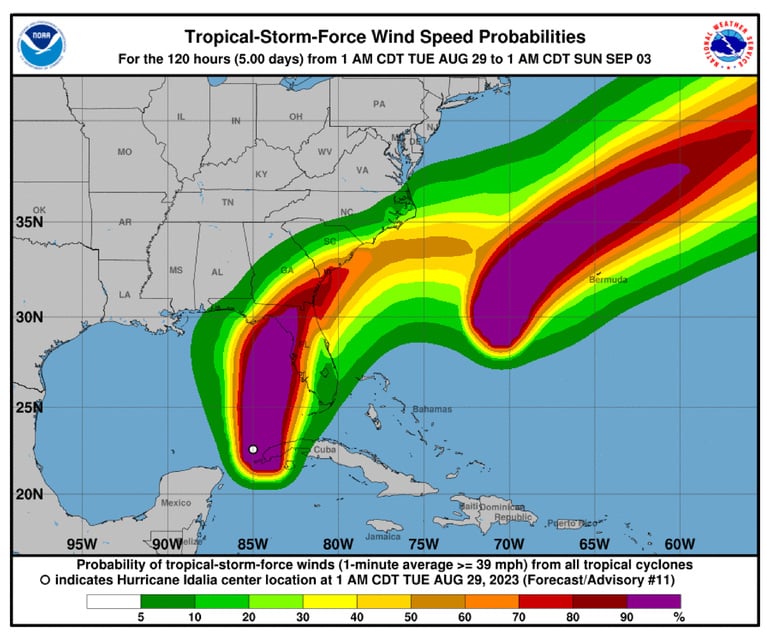Bonnie, Charley, Frances, Ivan, and Jeanne are names thatproperty and casualty carriers will not soon forget. Uninvitedguests, these hurricanes pounded Florida and the Southeast thisseason, catching many personal line carriers off guard and illprepared for the ensuing onslaught of claims. Making matters worse,these natural catastrophes arrived with such force, and in suchclose succession, that many insurance carriers were tested in termsof fulfilling policyholders' customer service expectations.
|The extent to which a cat adversely affects a carrier dependsupon a number of factors, including the number of policies in forcein the area that has been hit. Some factors, such as the severityof the storm or catastrophic event, are beyond the control of thecarrier. Others, however, such as the organization of the carrier'sclaim department and the claim-handling processes, can be managedto mitigate a disaster's impact, from both a customer service andclaim-handling cost standpoint.
|Claim reporting plays, perhaps, the most vital role in thehandling of catastrophe claims. It is a chance for carriers notonly to reach out and help their policyholders in a time of greatneed, but to control the flow of claims to their adjusters. Wellorchestrated claim intake soothes customers, dampens the chaos, andspeeds the settlement of claims; thereby mitigating overall claimcosts. Additionally, superior service during these stressful timescan lead to higher customer satisfaction index ratings, whichcorrelate directly with the customer retention goals of allcarriers.
|Most carriers have established procedures for handling incomingclaim reports during catastrophes, ranging from redeployingemployees to help support the temporary spike in claim volume, toworking with outside entities that focus specifically on staffaugmentation and disaster recovery planning. Few, however, havemade adequate preparations for worst-case scenarios such as thoseexperienced during this past hurricane season. Fewer still areemploying the full complement of strategies for minimizing thestrain of receiving a high volume of cat-related losses in a shortperiod of time. The majority of carriers, therefore, pay a steepprice when severe catastrophes do occur.
|Common Goals
|During a hurricane or other catastrophic event, claimprofessionals share some common objectives, including being readilyaccessible and available to receive loss reports from insureds,assigning claims quickly to the right offices and adjusters, andcommunicating with insureds to let them know the status of theirclaims. Achieving these objectives might best be accomplished bydrawing upon years of lessons learned to establish battle-testedclaim-handling practices.
|A crucial first step in effective cat claim handling is tosegment callers in the affected area from those in other parts ofthe country. Segmentation can be accomplished automatically byprogramming area codes into the telecom switch or at thetelecommunication provider level. Another segmentation alternativeis to add instructions at the top of the voice-prompt tree heard bycallers on the claim reporting hotline (e.g., “Press 1 to report aclaim related to Hurricane Frances”).
|Segmentation offers two benefits: protecting policyholders whohave not been hit by the storm and who have normal expectations forhow their claims will be handled, and allowing those who areaffected to have their calls routed to a group of handlers trainedto deal with the emergency.
|Although the disaster-affected policyholders will expect delayson the phone, they also willexpect special treatment once theircalls are picked up. Ideally, the carrier will designate a nationalcat-handling office or multiple regional offices, or allocate adesignated team in each of the contact centers to evenly distributethe incoming traffic.
|To handle more calls, simple arithmetic dictates that the callcenter either needs to have more people responding to incomingcalls or to shorten the length of each call. The former isvirtually impossible when all hands are already on deck.
|Strategies to abbreviate inbound cat calls include asking triagequestions early in conversations to gauge the severity of the loss;expediting the processing of heavy damages, while moving minimallosses down in the queue. Unnecessary questions should beeliminated from the normal call flow. Questions regardingbackground information on the property, for instance, or detailsabout witnesses usually are extraneous in emergency situations. Inaddition, referrals to vendor networks can be disabled temporarily,as all the local contractors are already beyond capacity aftercatastrophic events.
|Using all three of these techniques can reduce call times by asmuch as 20 to 25 percent, precious time in high-stress, high-volumesituations.
|An obvious, yet often overlooked method to limit the volume ofincoming phone calls is to offer alternate channels for reportingclaims and encouraging callers to use them. Policyholders need beeducated (repeatedly) about the alternative channels vianewsletters, direct mail inserts, and wallet cards mailedthroughout the year so that they are prepared in advance of anycatastrophes.
|Many carriers already have web sites with some ability to submitloss information over the Internet. To be most effective duringdisasters, however, these sites also should offer SOS links ontheir home pages and special streamlined claim reportingscreens.
|Of course, every carrier can accept faxes. Agents, inparticular, should be targeted for faxing in claims, as manyhistorically have faxed first reports directly to the carrier fordata entry into the claim system.
|Often, during a catastrophic event, announcements are recordedon the telecommunication switch to educate all callers on thevarious reporting options. Some carriers have considered usinginteractive voice response systems to allow insureds to report themost simple of catastrophe claims. Although still in their infancy,these speech recognition technologies eventually may become acommon tool to provide insureds with another simple and reliablemethod to report claims.
|Define Plan B
|What happens if one of the main contact centers is located inthe affected area and must be evacuated? Hopefully the carrier hasa backup plan. Many carriers have multiple contact centers orbuffer space in facilities that can be used during spikes involume. Other companies rely on staff in branch offices filling inas customer service representatives when a center goes down.
|An alternative strategy is to out source overflow traffic tothird-party providers. In the best case, a carrier would send apercentage of calls throughout the year to outside vendors toensure that phone agents remain proficient and comfortable with thecarrier's call flows and business rules. Only with this ongoingconcerted effort can the outside vendor be truly and fully readywhen a catastrophe hits. When using third-party providers to manageoverflow, adding capacity to handle the surge in calls becomes thevendors' problem rather than the carrier's.
|Of course, there is no substitute for planning, which includesusing third-party weather services (computer forecast modelinformation, combined with historical data and current stormmovement data), and workforce management software for staffing andscheduling purposes.
|As with all claim handling, automating routine procedures andbasic decision making during catastrophes can greatly increasecapacity. An ideal candidate for such automation is branch officeand adjuster assignment. Unique routing rules can be writtendirectly into the claim intake software such that certainhigh-severity claims from Florida, for example, get sent to aspecial Minneapolis branch office for expedited handling.
|These triage rules can be in place throughout the year or can betriggered in disaster situations only. Additionally, some carrierstailor their processes based upon the size of the insured'srelationship with the carrier. However, programming the desiredrule changes requires an intake engine flexible enough toaccommodate immediate changes when necessary.
|Let's face it, despite all the best laid plans, preparations,and efforts, no catastrophe plan can possibly cover every emergencysituation. By learning from experience, however, and applying someof the lessons learned by others, every carrier stands a muchbetter chance of weathering the storm when Cindy, Dennis, Emily,and Franklin come to call in 2005.
|Jay Guden is the vice president of call center operationswith First Notice Systems. He can be reached [email protected].
Want to continue reading?
Become a Free PropertyCasualty360 Digital Reader
Your access to unlimited PropertyCasualty360 content isn’t changing.
Once you are an ALM digital member, you’ll receive:
- All PropertyCasualty360.com news coverage, best practices, and in-depth analysis.
- Educational webcasts, resources from industry leaders, and informative newsletters.
- Other award-winning websites including BenefitsPRO.com and ThinkAdvisor.com.
Already have an account? Sign In
© 2024 ALM Global, LLC, All Rights Reserved. Request academic re-use from www.copyright.com. All other uses, submit a request to [email protected]. For more information visit Asset & Logo Licensing.








